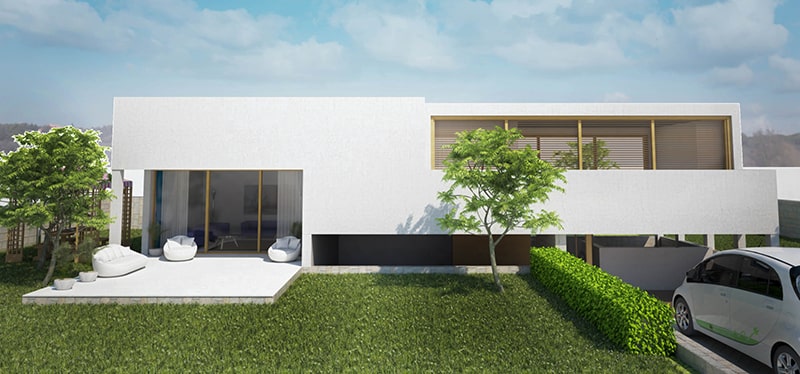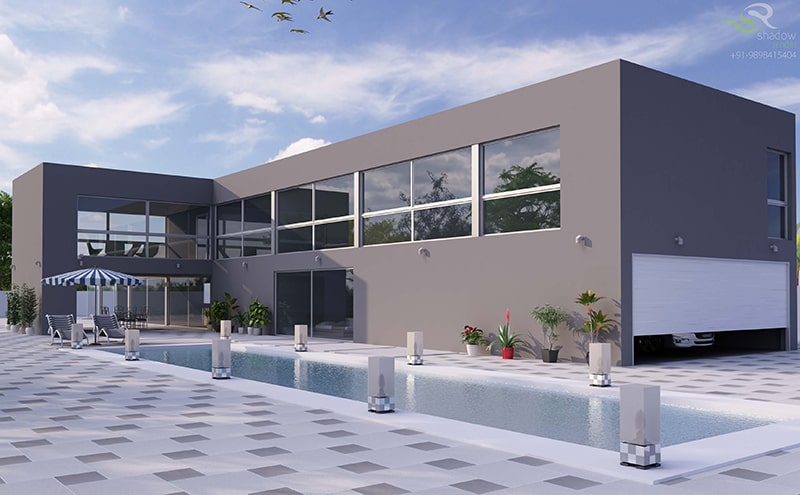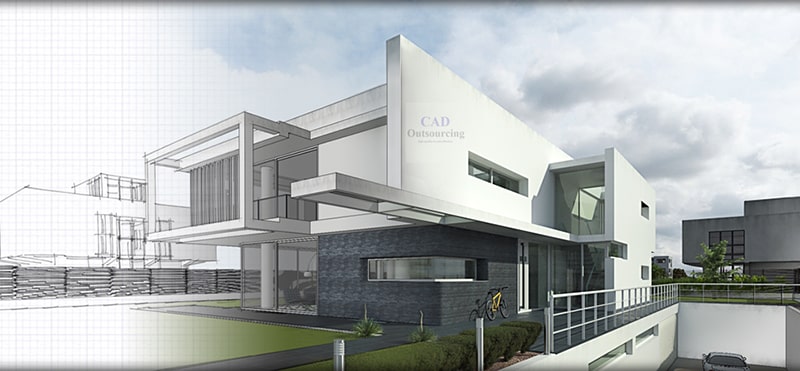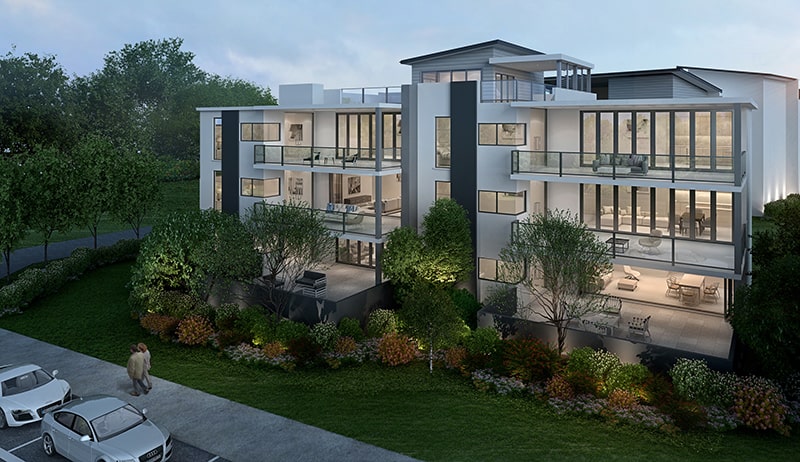Photorealistic 3D renderings are the wave of the future. Or at least, they were fifteen years ago. Now, they are becoming more and more commonplace.
Programs like Photoreal 3D and VDX can allow artists to create pieces of work that leap off the page, or screen, and come to life in ways that make it very hard to distinguish what’s real and what’s a design. Sculptures, textures, patterns, and nature all become handmade with 3D photorealistic rendering software, and the designs and capabilities are becoming ever more intricate and complex.
The capabilities have become so powerful, in fact, that artists have begun creating imagery designed to fool people into thinking they are truly photographs, and they are very effective at accomplishing this now.
Architects and civil engineers are becoming increasingly smitten with the world of photorealistic renderings, to the point where architecture is becoming more of a lesson in art than engineering. I’m sure that statement will receive some backlash from the architects who say it’s always been an art form, as well as those who say it will always be engineering.
But either way, photorealistic design is making it possible to create renderings of construction projects that are virtual in nature, but real in look and feel. 3D photorealistic renderings offer a wide array of benefits to architects and their clients alike, and they’re gripping the industry with their ability to dynamically visualize and interact with a space like no other medium can.
8 Ways Architects Can Benefit from 3D Photorealistic Renderings
1. Creativity, Freedom, and Mistake Proofing

3D photorealistic rendering services, like those offered by ArchiCAD and Octane Render, give architects a level of freedom, creativity, and flexibility that is unlike that offered by pencil and paper or regular two-dimensional drawings.
With 3D rendering services, it’s possible to zoom in and create minuscule detail that adds dimension and texture to a design. The architect can even erase items they dislike or go back to an older version of the design with a few clicks. Three decades ago this would have seemed like magic.
The flexibility offered by rendering software nowadays has no equal. An architect will start with a basic understanding of the layout or style they are designing. They can go ahead and create a simple two-dimensional sketch to lay everything out in terms of spacing and room locations, etc.
After that, however, they have an entire world in front of them. Instead of simply planning out the space to construct the rooms in, the architect can visualize the colors, walls, and lighting much more realistically.
2. Portfolio and Template Building
For an architect, using a rendering software is a gold mine. Not only can a designer or architect rapidly create a design and display it for their clients, but they can use it to curate a portfolio or template for future work. The ability to sell a copy to your customer as well as keep a copy for yourself becomes much simpler when you have digital copies through your rendering software.
Every good architect needs a portfolio. Copies of your work will be used as advertising in the future, and generating client leads will depend on being able to sell them on your ability to create dynamic, impactful visual designs.
3D photorealistic renderings can be compiled and saved as soon as you make them so that you can populate a portfolio to present to potential clients. These 3D renderings can be saved quickly, just by creating a virtual copy, instead of physical sketches that need to be either manually recreated or physically printed to duplicate.
They are also extremely dynamic renderings with an incredible visual presence. The emotional attachment draws a client’s eyes and wows them with the visuals to make them want to use your services.
When you have generated more clients, your historical renderings will continue to work for you. By creating your drawings in a virtual 3D rendering software, you will be able to use portions of previous designs as templates for future work.
If you are creating a similar design, you can grab a piece from your prior work to input immediately and massively accelerate your work. If you have a single client with multiple projects, this can be especially useful, because you will likely do similar finishes and textures, or even nearly identical buildings, such as if you are designing a manufactured neighborhood.
3. Break Down Barriers

There are a lot of logistical issues that arise when working on architectural projects. When you are doing work on a project that requires any sort of city rezoning, construction permit, or other similar approval, there are many legal and design hurdles that must be overcome.
If, for example, you are working on a historical project, such as a nineteenth-century home that is being redesigned and resold, there are a number of requirements that must be met. When you are doing the project, you have to submit the designs to a review board to receive approval for any potential changes you are making and to ensure they don’t break historical standards.
If the review board comes back with changes, you can not only quickly update the design to meet the changes, but you can display this information to them as accurately as possible with a 3D photorealistic rendering.
An architectural review committee will be more likely to approve a design if they can visualize it and evaluate the impact prior to actually building it. This can save you precious time because the committee will quickly be able to see and make a decision on the project.
Another example of this is when working within a homeowner’s association. There are very strict requirements about materials, colors, and dimensions when working on a residential property, and in many cases, they request a sketch or mockup of some sort before they approve any additions or changes.
Making the design photorealistic will automatically generate what they are looking for and you can update it to suit their needs immediately. Rendering software breaks down these barriers and helps to expedite the design and construction process.
4. Create an Emotional Impact
The emotional impact of a design is extremely underrated, especially when a space hasn’t yet been sold. More often than not, homes and buildings are sold based on an emotional connection.
Watch any show on HGTV and you’ll see examples where people have opted for a smaller house with fewer features because there was one small detail that grabbed them emotionally. This emotional connection cannot be overlooked when designing spaces, and 3D renderings can create that very impact.
If you are trying to manufacture the connection that will help to sell a house, there is no better way than to show them a realistic view of what you’re designing. Some people call it the “Look and Feel” aspect, where you can visualize what the space would look like from the inside and what it would feel like to be there. Creating this sense of identity and connection with a space will spur prospective clients to latch onto the house and be more willing to purchase it.
This works equally well with other spaces as well. If you are creating a hotel or an office space, making the design visually appealing and including pieces of character will improve the overall identity of a space, making it more marketable.
Photorealistic renderings offer a sense of identity and character to a space that a blueprint can’t create. Whether it’s a brick feature wall, a picture window that displays a beautiful cityscape, or a rooftop patio addition, you can incorporate stunning visuals that will captivate your clients and have you begging to design their space.
In architecture and design, emotions will win the day, and they can help you generate the most income for your creations as possible.
5. Entice Investors

In architecture, cash is king. To have cash on hand to create your projects, investors are necessary. Whether you’re flipping houses or you’ve been tabbed to design a large industrial complex, you will need capital. The best way to attract investors to your project is to give them something they can see and feel.
A photorealistic rendering gives the investor something they can observe and get excited about. The emotional impact for them is just as important as it is for the potential buyer. When you can hand the investor a design that shows them not only exactly what the final product will look like, but will show them exactly where their funds will be used, they will be much more confident in your project and therefore willing to invest in your efforts.
A photorealistic rendering can show them what fixtures you plan to use and how much they will cost, what you will be doing with the HVAC system and the associated costs, and more. You will be able to offer them a piecewise view of every dollar they would be investing.
This rendering will also give them confidence in the product. They can see how much they need to spend, and you can show them what changes end up needing more capital, but they can also have something they are proud of before it’s finished.
An investor can show the drawing to friends, family, business associates, and show them what they are a part of, which will give them a sense of ownership and excitement about what they are investing in. This will connect them with the project and make them more likely to get on board, and potentially stay on board for further projects.
6. Create Better Communication
What’s the key to every great relationship? Communication. Whether that communication is between you and your spouse, you and your business partner, or you and your client, the way to have the best relationship is to communicate well. But what is the best way to communicate? That’s trickier to understand.
Some of you may have done an exercise in school where you are to instruct an alien who has never been on Earth before how to make a peanut butter and jelly sandwich.
No matter how well you explained to them what to do, the teacher, who was acting as the alien, would find wiggle room in your directions and do the wrong thing. You’d end up with peanut butter on the outside or some form of peanut butter and jelly burrito.
Six Sigma, the business efficiency and waste reduction practice, has an answer to this. When you’re creating work instructions or communicating with another individual, words are usually one of the worst ways to communicate. Visuals are everything. A photographic explanation of how to change a tire will yield a better result than written instructions.
In the same way, a photorealistic explanation of what the design will look like will communicate your vision much better than words ever could. When you are communicating with clients, supervisors, or investors, the best way to take them on the journey of your architectural construction with you is to show them the actual product.
Photorealistic 3D architectural rendering services give you the opportunity to truly display what you are making before you make it, and it looks just as real and is just as interactive as the real thing will be when it’s complete. Stop using words to communicate, speak with your design.
7. Expand Your Online Presence

Every piece you create is a piece for your portfolio. We discussed this earlier, that 3D renderings can be used for an architectural portfolio with the click of a button. Better than that, however, is that you can use it to expand your online presence and reach a much wider audience.
With the advantage of the internet and the ability to work virtually, there should be no limitations on where you want to display your portfolio. Creating an online presence will allow you to take jobs as far away as India without leaving your living room sofa. An architect can work on their own time and complete these projects from the comfort of whatever studio they choose to work in.
Using a 3D rendering software, you can take your designs and publish them to an online portfolio, and expand your reach exponentially. Every design will draw more traffic to your business and allow you to take on bigger and better projects.
An online presence is fundamental to expanding your business in the modern market, and an eye-catching, photorealistic 3D rendering will help sell your services better than any marketing campaign ever could.
8. Increase Impact Without Increasing Budget
By using a 3D rendering software, you can increase your impact tremendously with a few simple clicks. There is no additional fee for a second architect or a designer to come through and craft specific materials. There is little extra time needed to render a brick façade as opposed to a vinyl one.
An emotional impact will be one of the biggest draws you can incorporate in your designs. Using immediate 3D rendering will allow you to incorporate emotion without changing a single aspect of your design budget.
You will be able to show your client the design for their dream home with all the expensive upgrades added in seconds when you use photorealistic 3D renderings. This impact will be a major selling point for the design and encourage the buyer to include the more expensive touches and frills, that you add into the design for no extra cost on your part.
You can make immediate, massive changes to the impact without touching the upfront costs, which will be extremely beneficial to you and your investors. Plus, you can give the clients multiple options with different touches without any extra effort, and this will allow them to choose what best fits their needs.
Photorealistic 3D rendering services give so much more flexibility and marketability, with none of the additional price.
Using a 3D photorealistic rendering may seem intimidating, especially to architects who have never worked with one before. You can’t deny the impact and affordability they offer, though. The benefits of these renderings speak for themselves, and they will help sell your services, expand your market, and make your clients’ dreams come true.
There’s no better place to hire a 3D designer who has experience with software such as AutoDesk Revit, Blender, and Octane Render than CAD Crowd. You’ll be guaranteed to have the best designers at your disposal who can create amazing designs and change the pace of your business.
Better yet, all of your intellectual property is secure, and CAD Crowd makes it safe and easy to hire freelancers to make your dreams a reality. Don’t hesitate, your next project is waiting for you to create stunning, dynamic visual, and the best architects and designers are waiting to take your business and designs further than they’ve ever been before. Check out how it works or get a quote if you’d like to get started.
